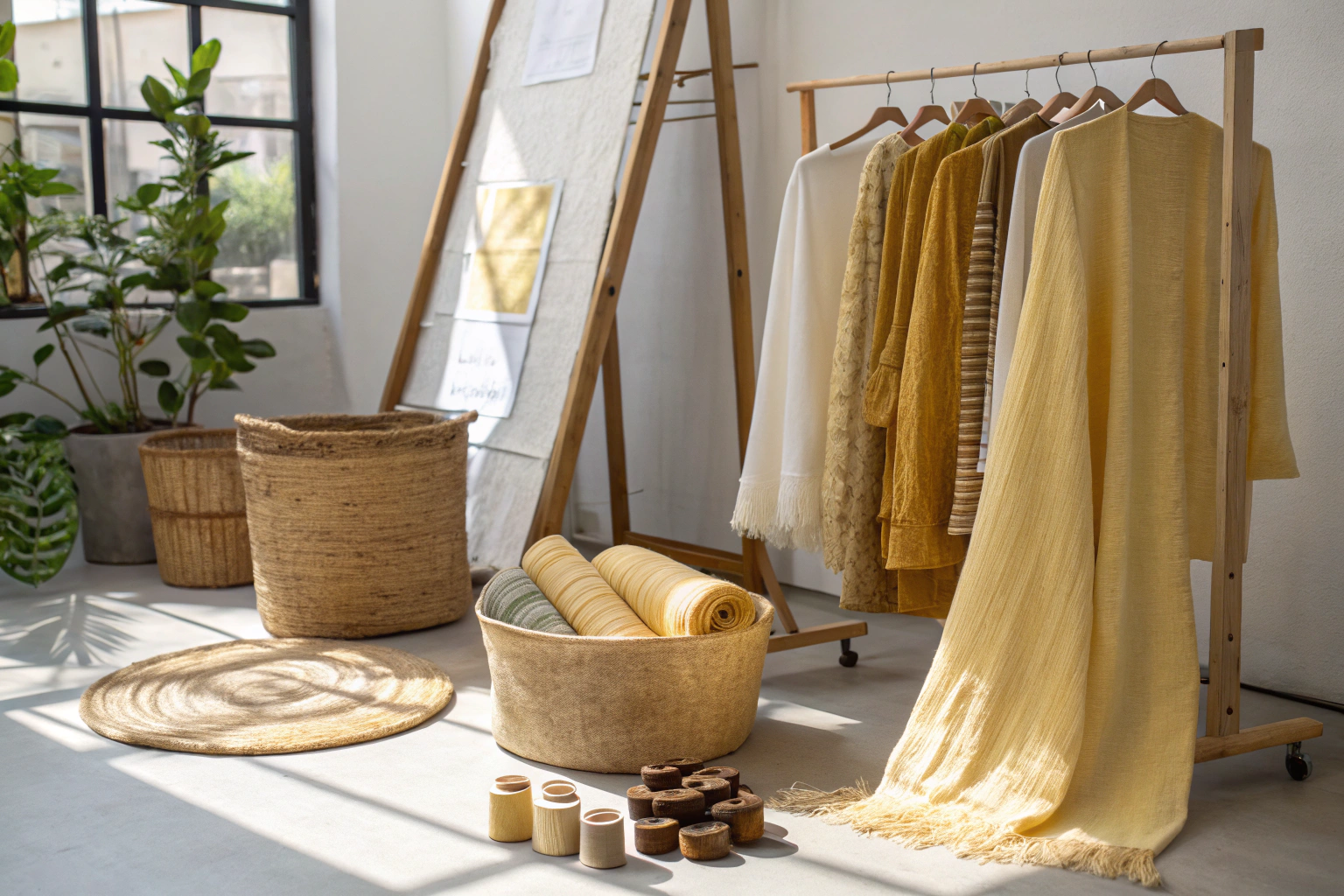The summer apparel market is shifting. Consumers are demanding natural, breathable, and sustainable fabrics that are both eco-responsible and fashion-forward. But traditional fibers like cotton and linen are facing growing competition from alternative natural sources—one of which is gaining global attention: banana fiber.
Banana fiber fabric is lightweight, breathable, and eco-friendly—making it an ideal choice for sustainable summer textiles. It's naturally moisture-wicking, UV-resistant, and biodegradable.
If you’re a fashion entrepreneur, textile buyer, or eco-conscious brand, exploring banana fiber could unlock new product appeal and environmental credibility. Below, I’ll break down why this underrated fiber might just be your next best material.
What Are the Unique Properties of Banana Fiber Fabric?
Banana fiber (also known as Musa fiber) is derived from the pseudostem of banana plants. It has been used for centuries in parts of Asia, but modern extraction and weaving methods are bringing it into contemporary fashion.
Banana fiber is known for its high tensile strength, lightweight texture, and superior breathability—making it a natural fit for summer apparel.
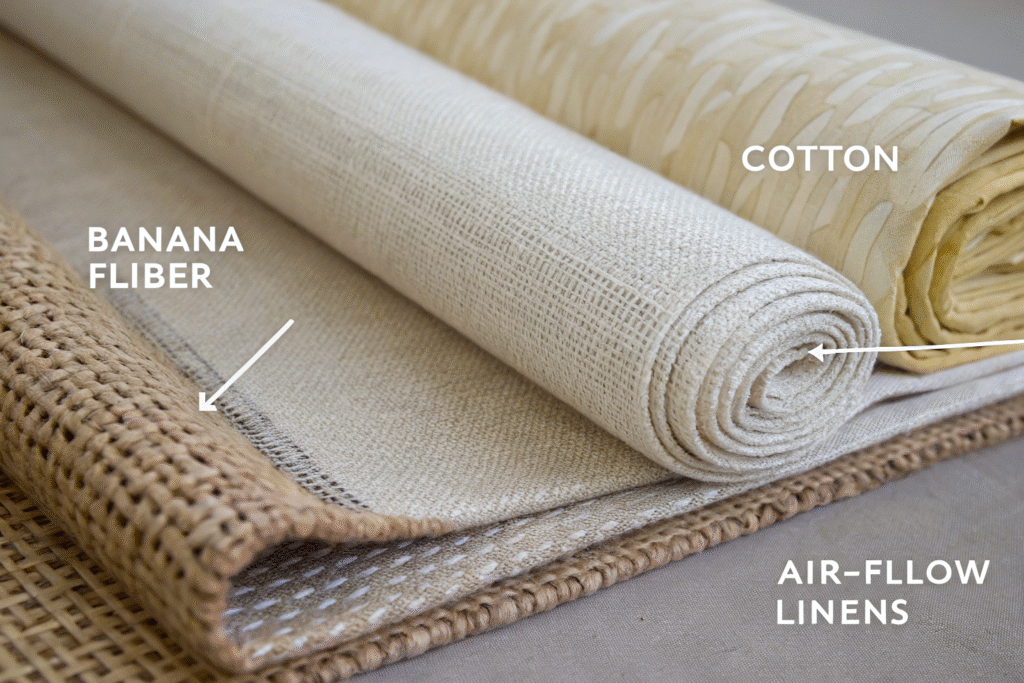
How Does Banana Fiber Compare to Cotton and Linen?
Compared to cotton and linen, banana fiber:
| Feature | Banana Fiber | Cotton | Linen |
|---|---|---|---|
| Weight | Very Lightweight | Medium | Medium-Light |
| Breathability | Excellent | Good | Excellent |
| Sustainability | High (zero-waste) | Moderate (water) | High |
| Texture | Silky-Coarse Mix | Soft | Crisp |
You can find more material comparison data on Good On You and sustainable reviews from Common Objective.
Is Banana Fiber Naturally UV or Moisture Resistant?
Yes. Banana fiber naturally resists UV rays and absorbs moisture quickly. These properties make it perfect for sun-exposed garments, such as resort wear or breathable base layers.
Sources like Textile Today and Sustain Your Style offer more data on performance benefits of plant-based textiles.
Why Is Banana Fiber Considered an Eco-Friendly Textile?
Banana fiber is a byproduct of banana agriculture. Once fruit is harvested, the plant’s stem typically goes to waste. Instead, it can be processed into fiber using zero-pesticide, zero-chemical methods.
Choosing banana fiber diverts agricultural waste from landfills and promotes a circular production model—making it one of the most sustainable textile options available.
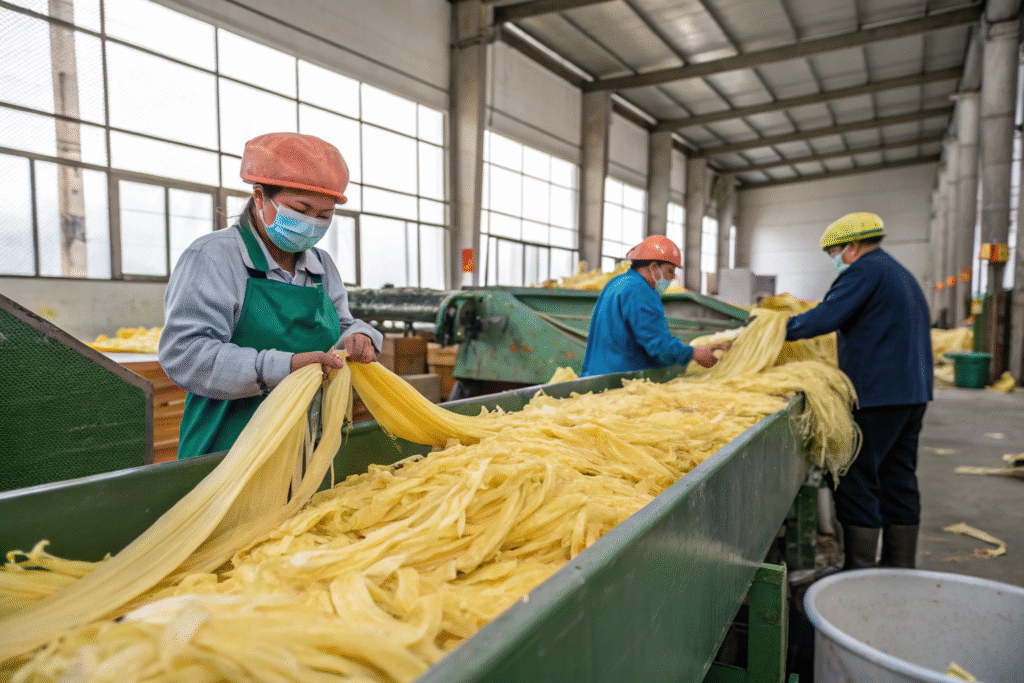
Does Banana Fiber Production Require Chemicals or Dyes?
No. Banana fiber is often processed using mechanical extraction and minimal water. It takes on natural shades from creamy white to light tan, often eliminating the need for harsh dyes.
You can see real-world examples at Green Banana Paper or Ananas Anam’s Piñatex®, which share banana and pineapple-derived fabric processing.
How Much CO₂ Can Be Saved by Using Banana Fiber?
Research suggests that banana fiber emits 60–70% less CO₂ than conventional cotton, thanks to its low-energy processing and waste utilization. Studies from Textile Exchange and Fashion for Good outline these environmental impacts.
What Are the Applications of Banana Fiber in Summer Garment Design?
Banana fiber can be spun into both woven and knitted structures, making it suitable for a wide range of applications in summer fashion—from breezy dresses to performance tops.
It offers designers a stylish alternative to traditional cellulose fibers while meeting modern needs for sustainability and performance.
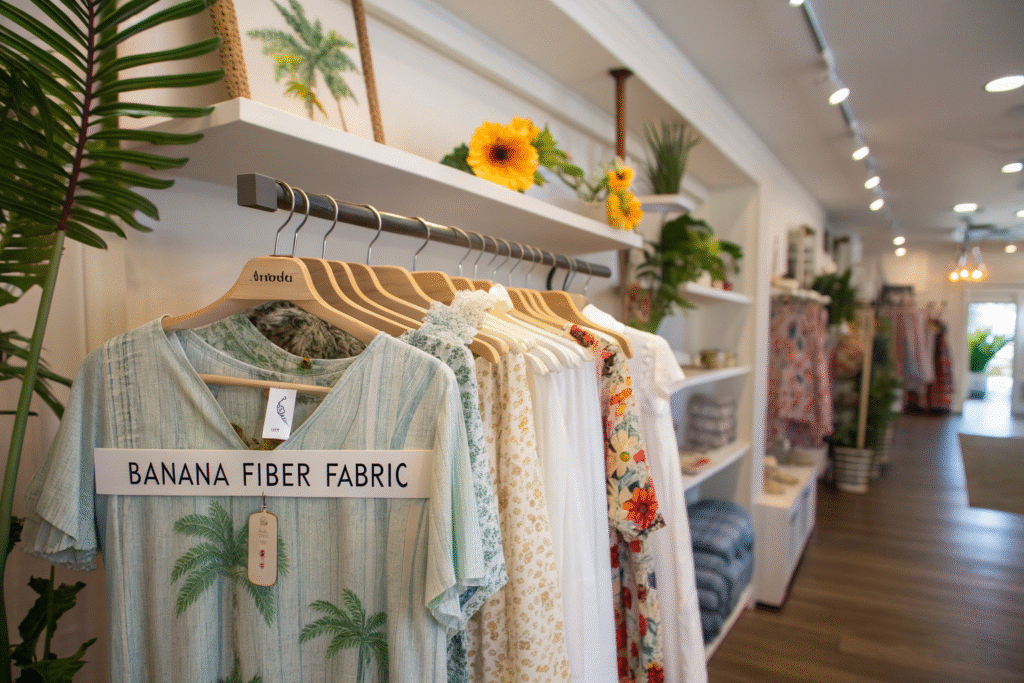
Which Types of Summer Garments Benefit Most?
Ideal categories include:
- Resortwear (sarongs, wraps, resort shirts)
- Yoga and athleisure (light tees, wraps)
- Casual wear (shorts, skirts, tanks)
- Ethical luxury fashion (handwoven tunics, accessories)
Retailers like Bhava Studio and SAMARA Bags showcase bio-fiber-based fashion collections with banana and similar textiles.
Can Banana Fiber Be Blended for Better Performance?
Yes. Banana fiber is often blended with cotton, silk, or Tencel to enhance softness and drape. A 70% banana / 30% cotton blend creates a breathable yet structured fabric perfect for summer button-downs or fashion tops.
View product specs and blend variations at Fibre2Fashion and TradeIndia’s eco fabric category.
How to Source Quality Banana Fiber Fabric in Bulk?
Sourcing banana fiber fabric requires verifying supply chain transparency, eco-certifications, and test reports. Global production hubs include India, Nepal, Philippines, and China.
Ask for GOTS, OEKO-TEX, or SGS testing where possible, and choose factories with in-house weaving and dyeing capabilities for better quality control.
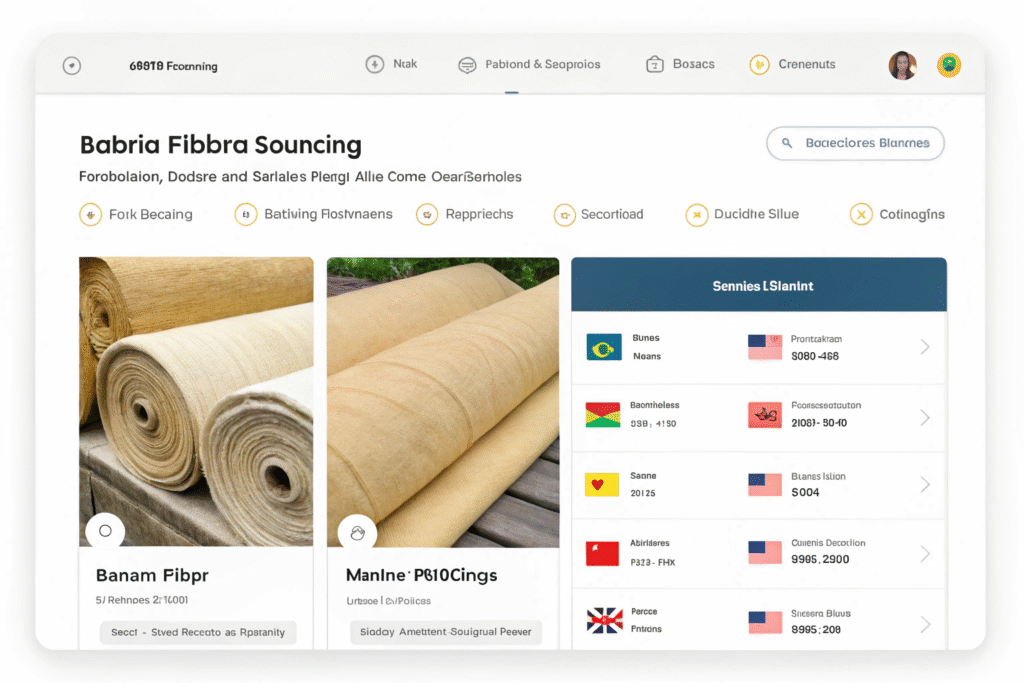
Which Countries Lead in Banana Fiber Fabric Manufacturing?
- India: Known for artisan weaving and handloom blends
- China: Industrial-scale banana-Tencel or banana-cotton production
- Philippines: High-quality abacá-based banana fiber
- Nepal: Natural dye and craft-focused banana fiber textile SMEs
Explore leads via Alibaba or sustainable supplier hubs like Ecotextile News.
What Is the Typical MOQ and Lead Time?
Most factories offer:
| Order Size | MOQ | Lead Time |
|---|---|---|
| Small Run | 100–300 meters | 10–15 days |
| Mid Range | 500–1000 meters | 15–25 days |
| Large Bulk | 3,000+ meters | 30–40 days |
Ask for sample swatches and GSM sheets. Platforms like Indiamart and Sourcemap help visualize transparent banana fiber supply chains.
Conclusion
Banana fiber fabric isn't just a trend—it's a breakthrough in sustainable, breathable, and functional textile innovation. Its natural moisture control, silky-yet-structured feel, and low environmental impact make it ideal for lightweight summer collections.
At Fumao Fabric, we offer customized banana fiber blends suitable for woven or knit garments, with SGS-backed testing and flexible MOQs. Whether you're sourcing for resortwear, eco-loungewear, or summer-ready streetwear, we can help bring your banana fiber concepts to market.
Contact our Business Director Elaine at elaine@fumaoclothing.com to request samples or discuss your next lightweight, low-impact fabric collection.

